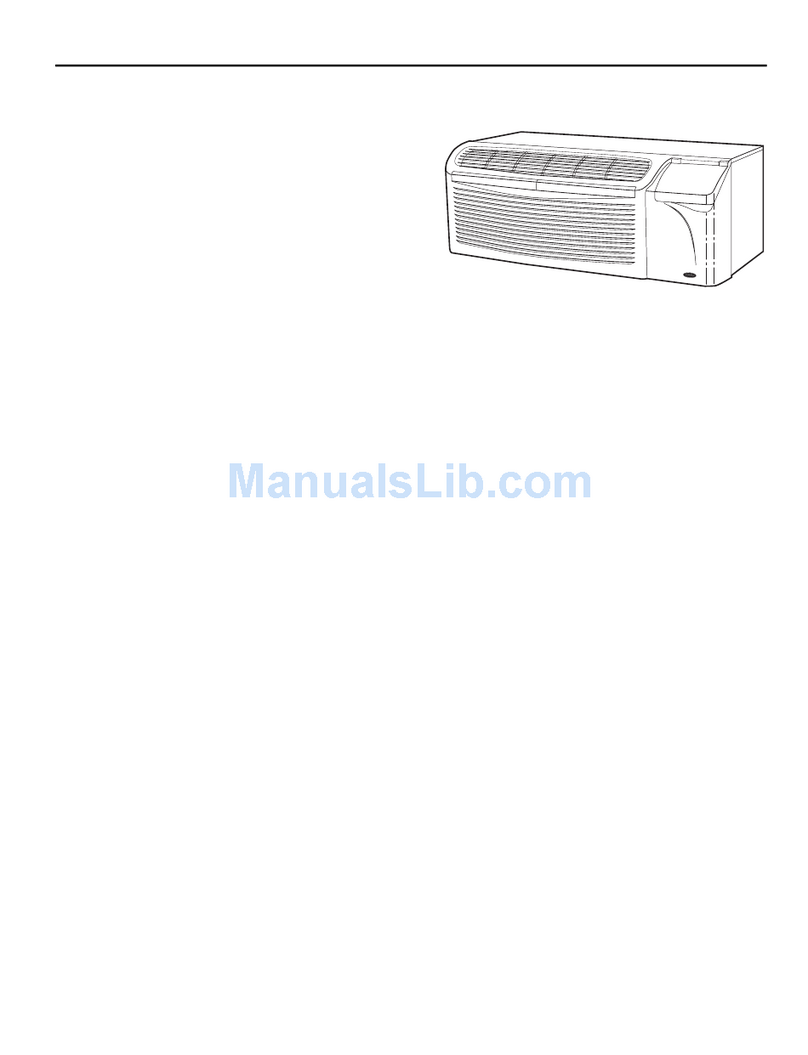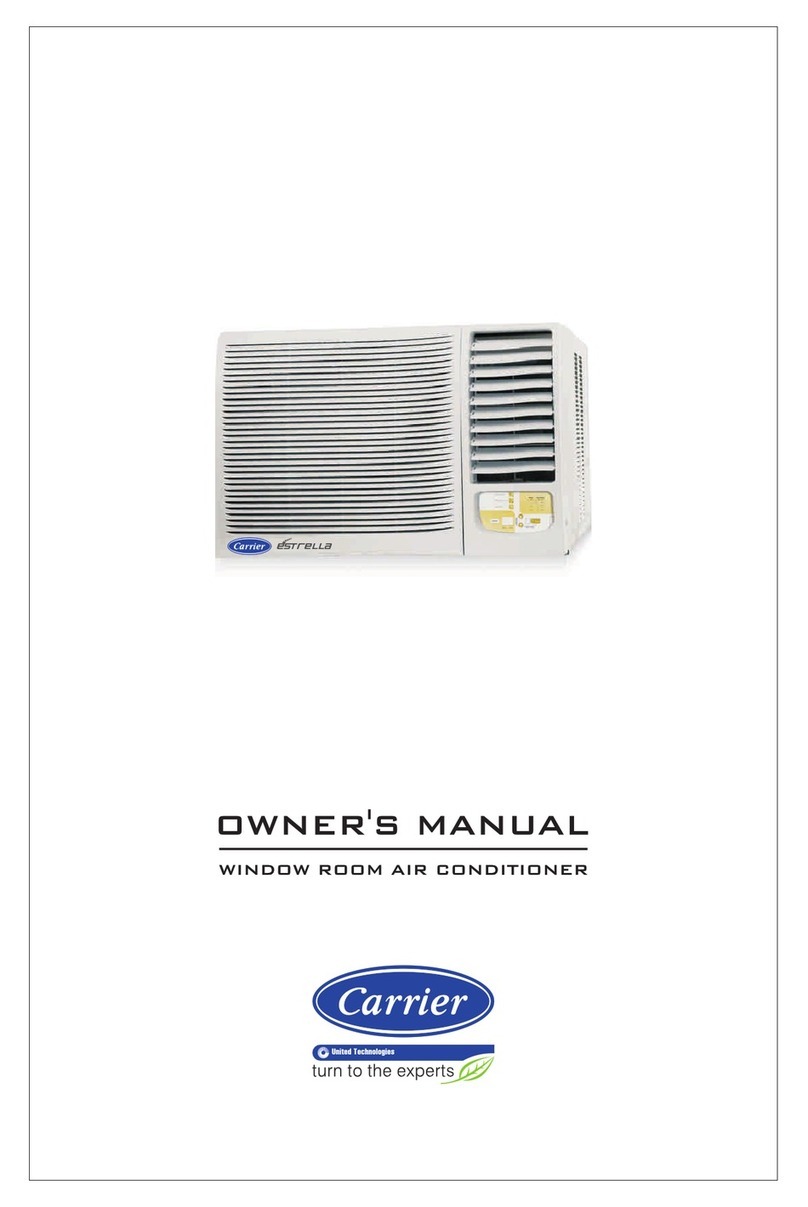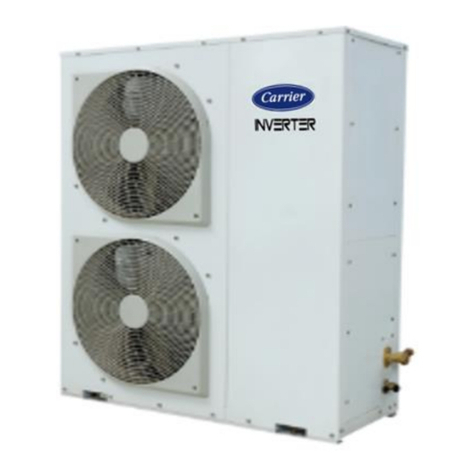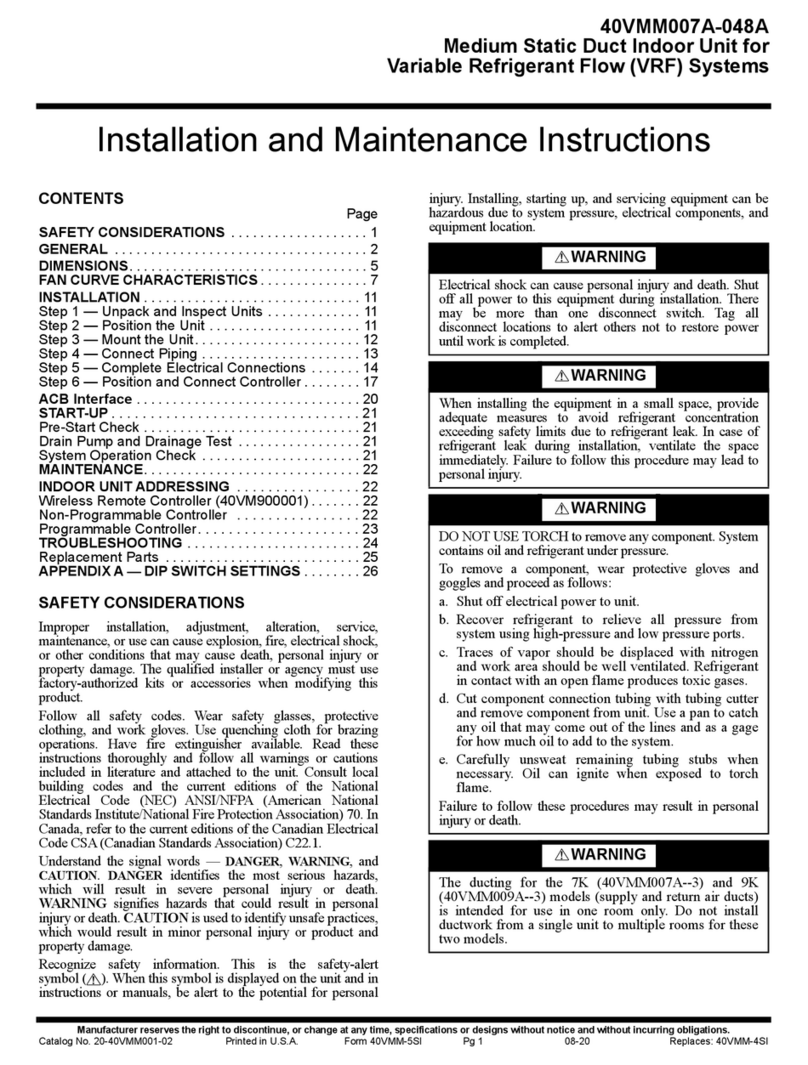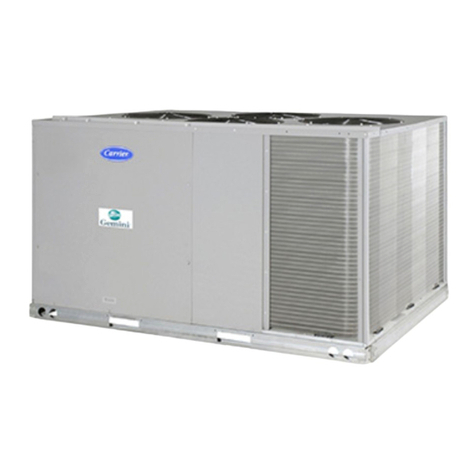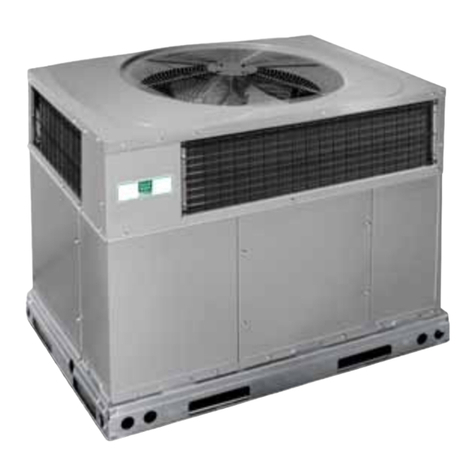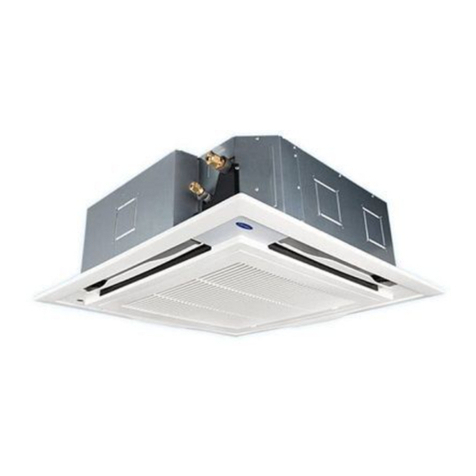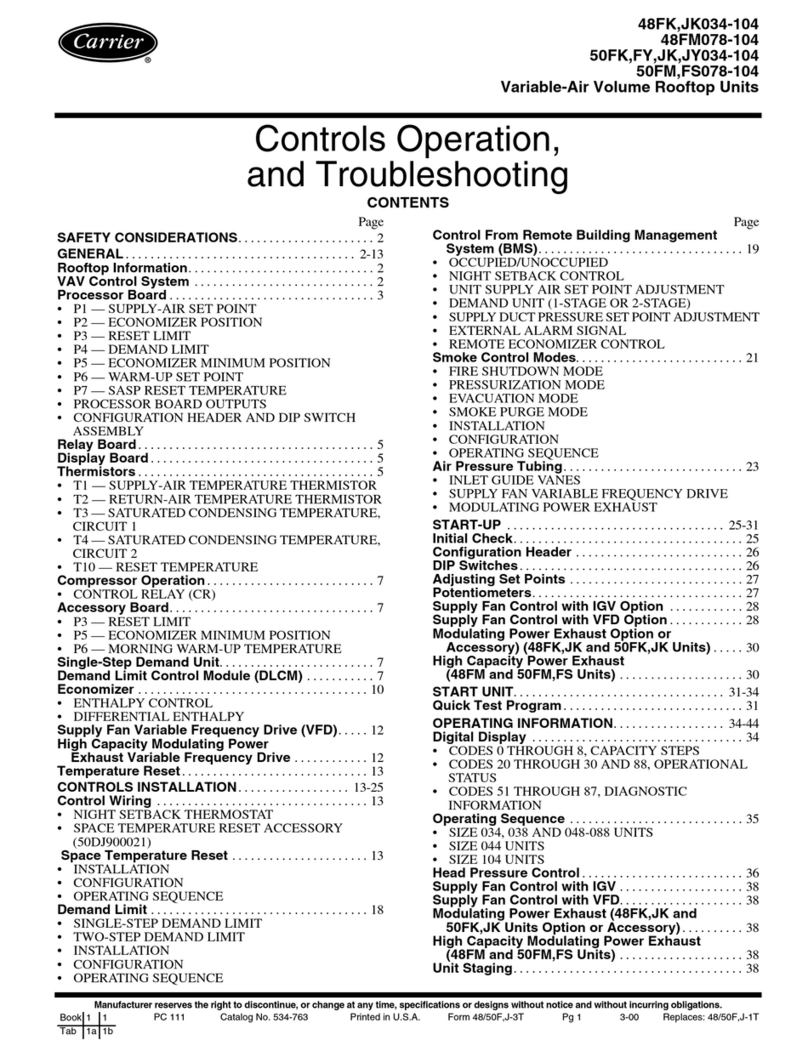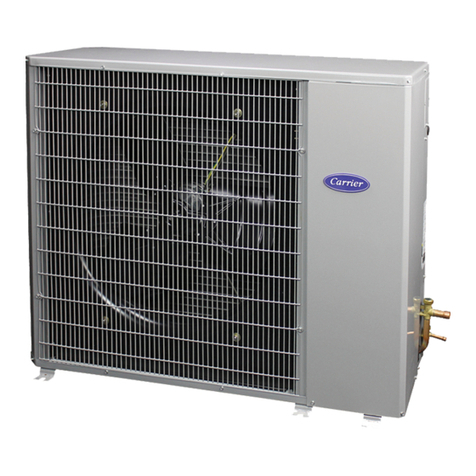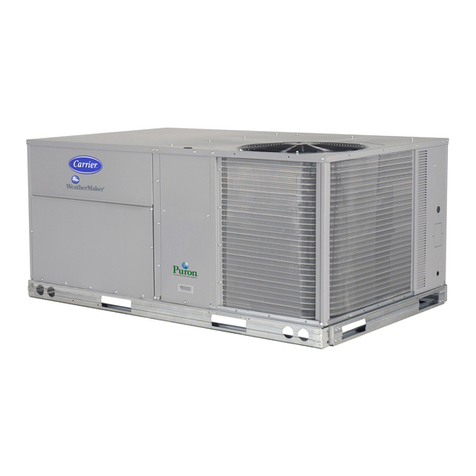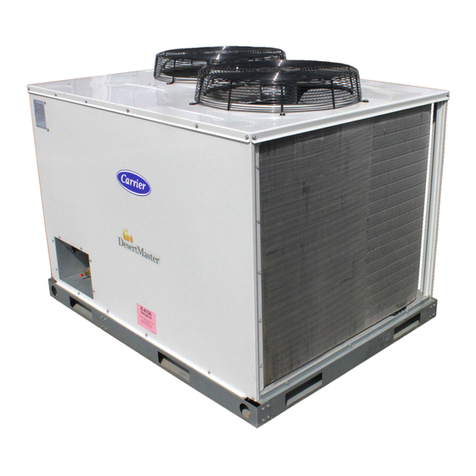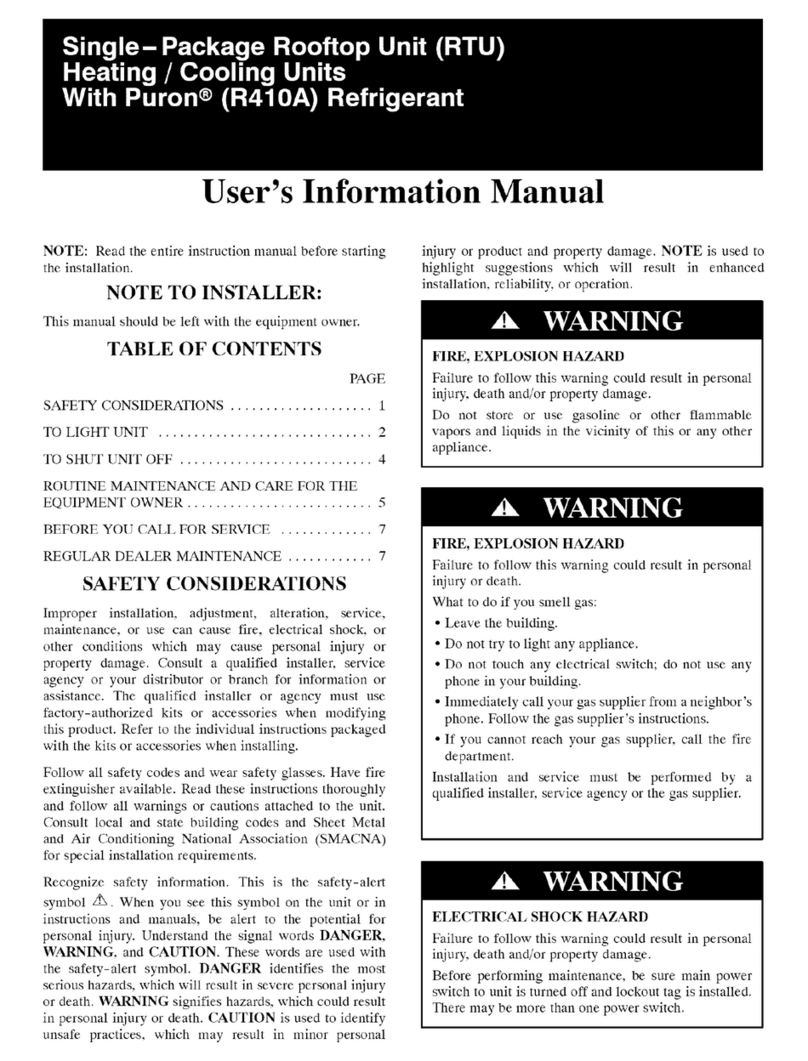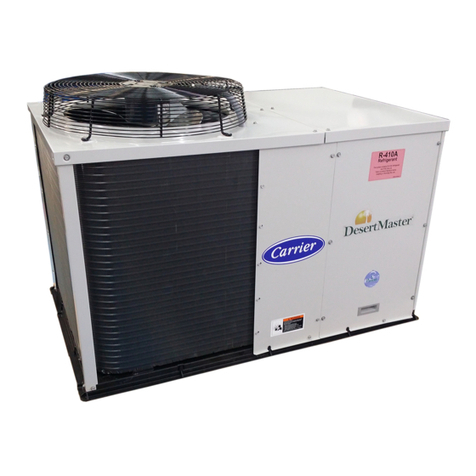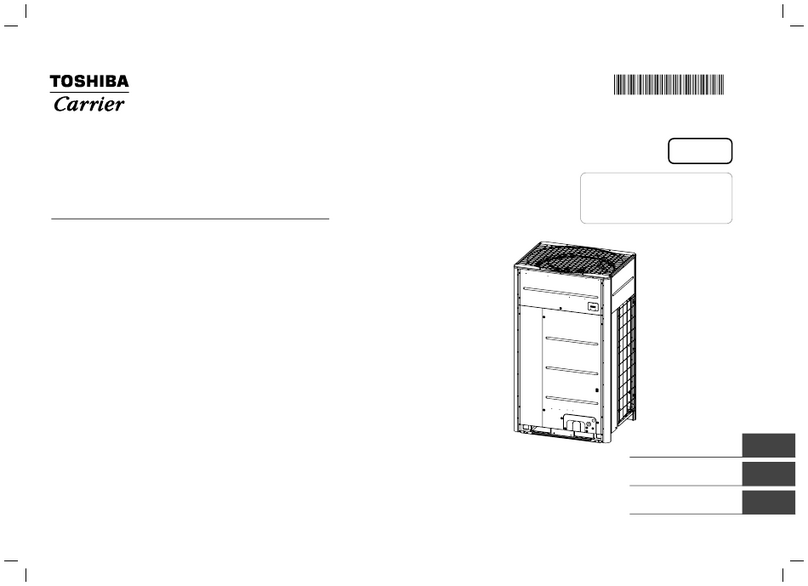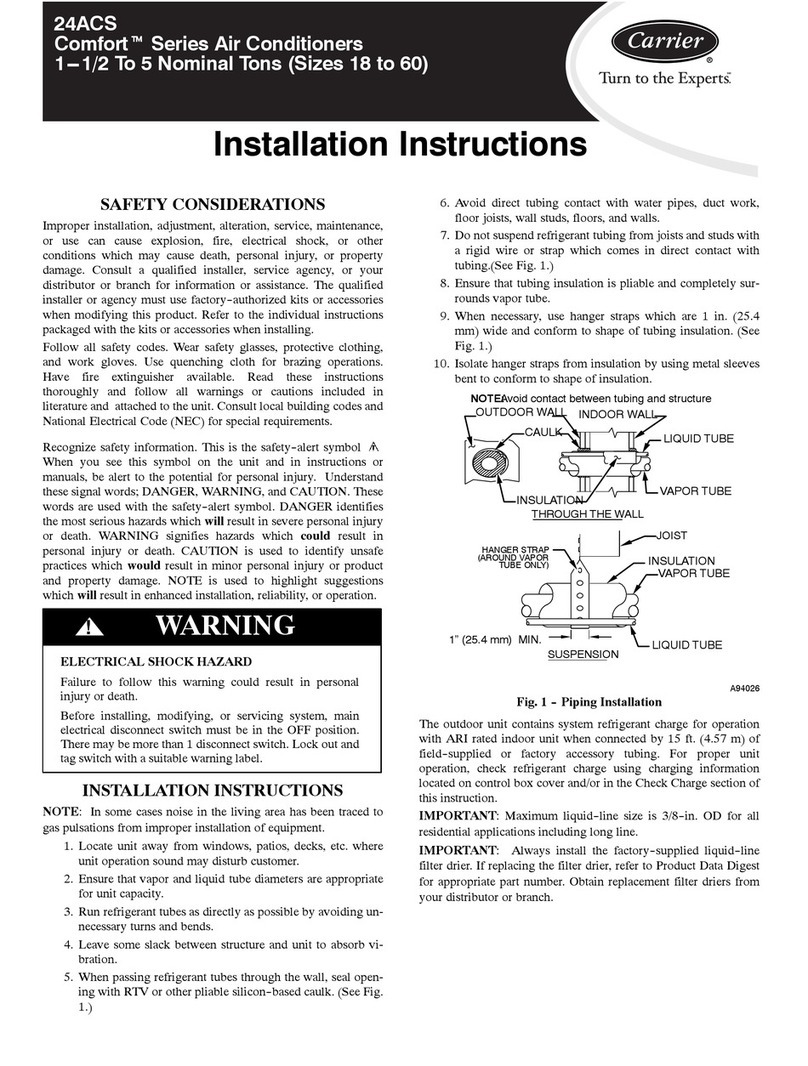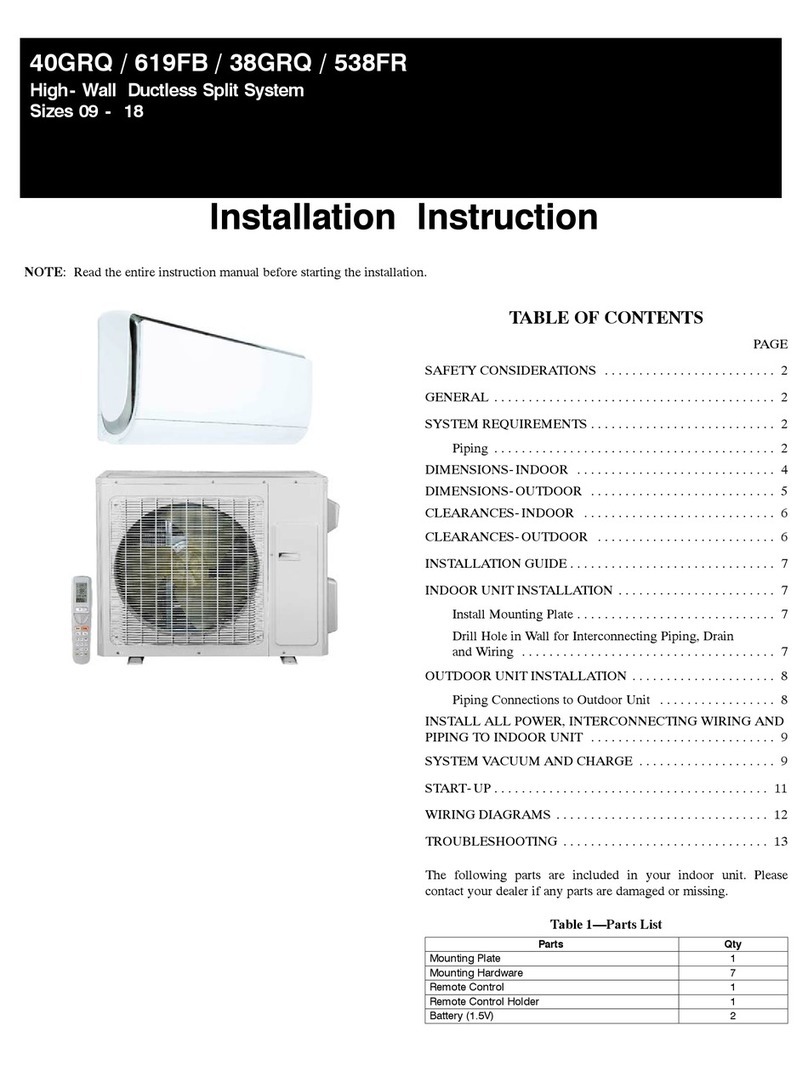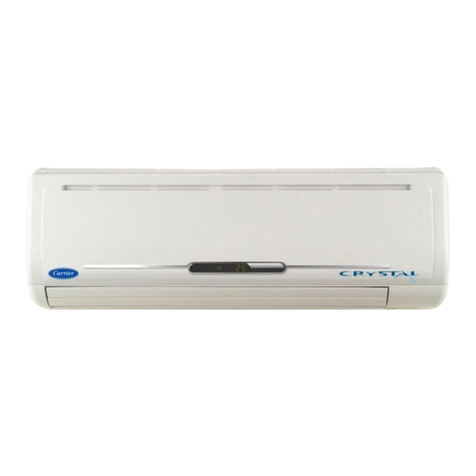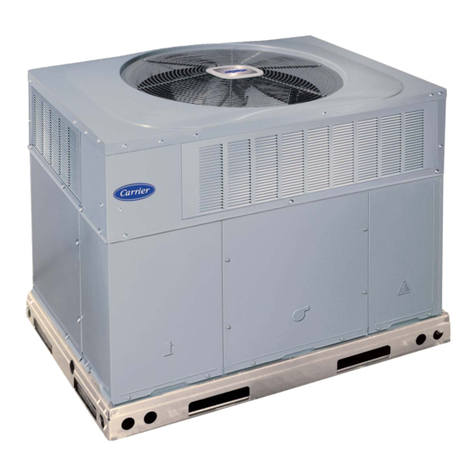3
Installation, start-up and servicing of equipment can be
hazardous if certain factors particular to the installation are
not considered: operating pressures, presence of electrical
components and voltages and the installation site (elevated
plinths and built-up up structures). Only properly qualified
installation engineers and highly qualified installers and
technicians, fully trained for the product, are authorised to
install and start-up the equipment safely. During all servicing
operations all instructions and recommendations which
appear in the installation and service instructions for the
product, as well as on tags and labels fixed to the equipment
and components and accompanying parts supplied sepa-
rately, must be read, understood and followed.
• Apply all standard safety codes and practices.
• Wear safety glasses and gloves.
• Use the proper tools to move heavy objects. Move
units carefully and set them down gently.
Only personnel qualified in accordance with IEC (Inter-
national Electrotechnical Commission) recommendations
may be permitted access to electrical components. It is
particularly recommended that all sources of electricity to
the unit be shut off before any work is begun. Shut off the
main power supply at the main circuit breaker or isolator.
IMPORTANT: This equipment uses and emits electro-
magnetic signals. Tests have shown that the equipment
conforms to all applicable codes with respect to electro-
magnetic compatibility.
RISK OF ELECTROCUTION: Even when the main
circuit breaker or isolator is switched off, certain circuits
may still be energised, since they may be connected to a
separate power source.
RISK OF BURNS: Electrical currents cause components
to get hot either temporarily or permanently. Handle
power cable, electrical cables and conduits, terminal box
covers and motor frames with great care.
Fan start-up:
ATTENTION: In accordance with the operating
conditions the fans can be cleaned periodically. A fan can
start at any time, even if the unit has been shut down.
Pro-Dialog is a system for controlling single-, dual- or triple-
circuit 30RB air-cooled liquid chillers or 30RQ air-to-water
heat pumps. Pro-Dialog controls compressor start-up needed
to maintain the desired heat exchanger entering or leaving
water temperature. In cooling mode it controls the operation
of the fans to maintain the correct condensing pressure in
each circuit. For heat pump units it controls and optimises
the defrost cycles of each circuit in order to minimize the
heating capacity reduction. Safety devices are constantly
monitored by Pro-Dialog to ensure their safe operation.
Pro-Dialog also gives access to a Quick Test program
covering all inputs and outputs.
All Pro-Dialog Plus controls can work in accordance with
three independent modes:
• Local mode: the machine is controlled by commands
from the user interface.
• Remote mode: the machine is controlled by remote
contacts (volt-free contacts).
• CCN mode: the machine is controlled by commands
from the Carrier Comfort Network (CCN). In this
case, a data communication cable is used to connect
the unit to the CCN communication bus.
The operating mode must be chosen with the Start/Stop
button described in section 4.2.1. When the Pro-Dialog
Plus system operates autonomously (Local or Remote
mode) it retains all of its own control capabilities but does
not offer any of the features of the CCN network.
In this manual, the refrigeration circuits are called circuit
A, circuit B and circuit C. The compressors in circuit A are
labelled A1, A2, A3 and A4. Those in circuit B are B1, B2,
B3 and B4 and those in circuit C are C1, C2, C3 and C4.
The following abbreviations are used frequently:
CCN : Carrier Comfort Network
CCn : Operating type: CCN
LED : Light Emitting Diode
LEN : Sensor Bus (internal communication bus linking
the basic board to the slave boards)
LOFF : Operating type: Local Off
L-On : Operating type: Local On mode
L-Sc : Operating type: Local On following a time schedule
MASt : Operating type: master unit (master/slave assembly)
rEM : Operating type: by remote contacts
SCT : Saturated Condensing Temperature
SST : Saturated Suction Temperature
EXV : Electronic Expansion Valve
